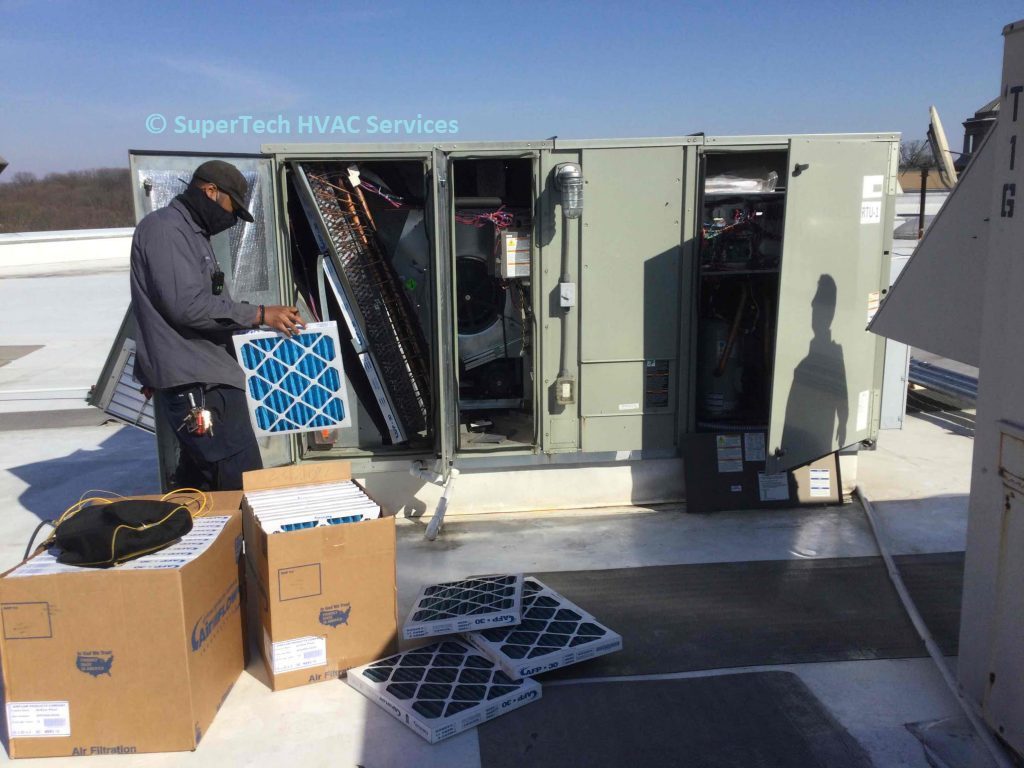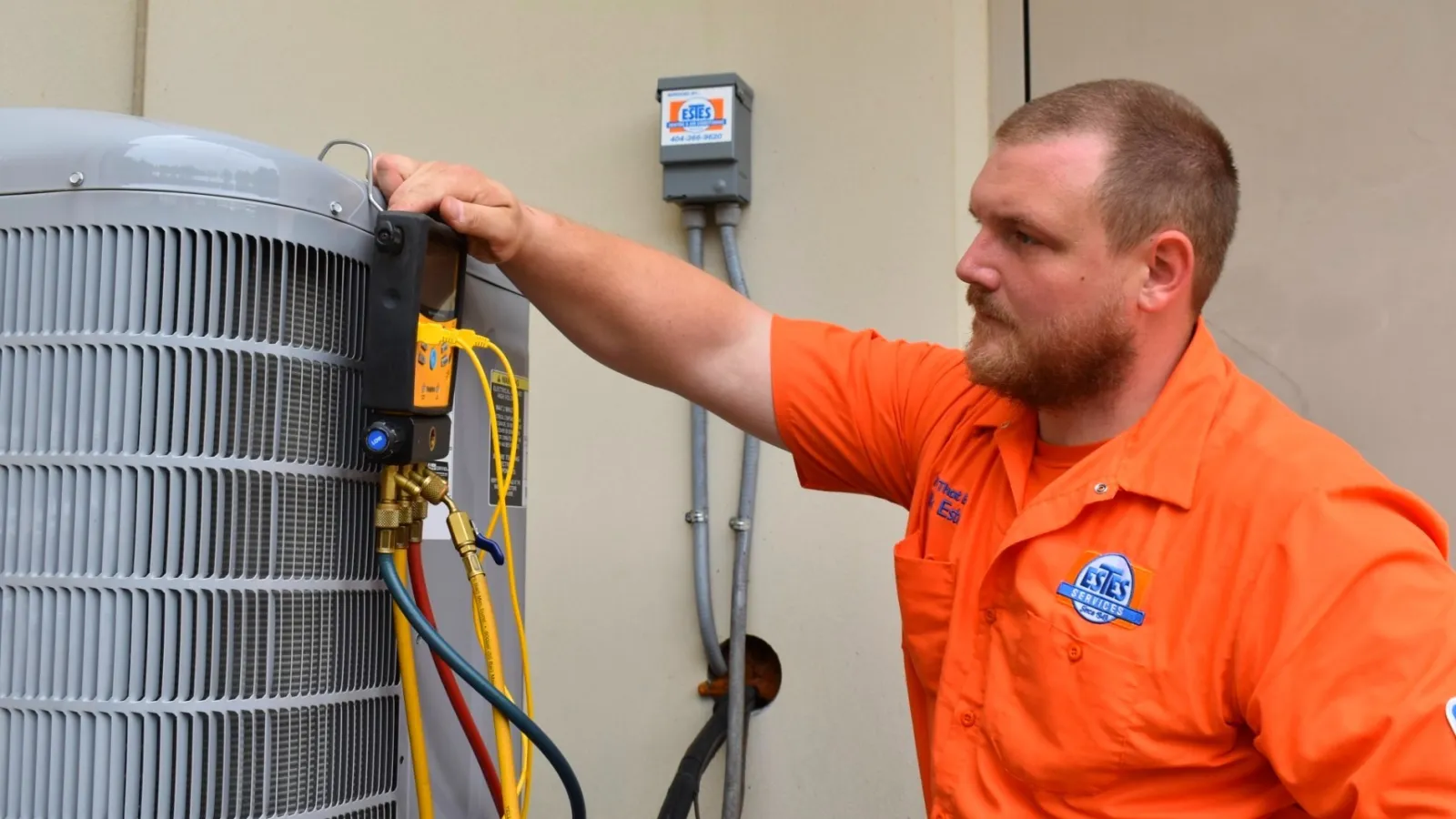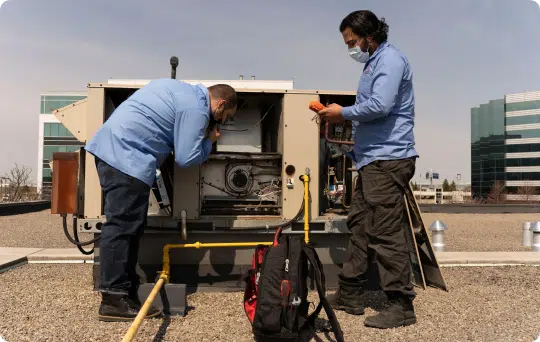Prevent Costly Repairs with Scheduled heat pump service
Prevent Costly Repairs with Scheduled heat pump service
Blog Article
Just How a Warmth Pump and Furnace Collaborate to Optimize Your Home's Heating Performance
Comprehending exactly how a warmth pump and furnace interact is essential for house owners looking for reliable home heating solutions. Each system has its staminas, providing a well balanced approach to home convenience. The heatpump masters moderate temperatures, while the furnace supplies quick warmth throughout extreme cold. This synergy not just lowers power costs however also improves the life-span of both devices. What factors affect this partnership, and exactly how can homeowners maximize their advantages?
Comprehending Warmth Pumps: Exactly How They Work
Many individuals might be unfamiliar with their internal functions, warm pumps play a necessary function in modern heating systems. These tools operate by moving warm from one location to one more, making use of the concepts of thermodynamics. In chillier months, a warm pump essences warmth from the outdoors air, ground, or water, and transfers it indoors to warm the space. Conversely, throughout warmer months, it can reverse the process, functioning as an air conditioning system by eliminating warm from inside to the outside.Heat pumps include an evaporator, compressor, development, and condenser valve. The cooling agent within the system soaks up warm as it vaporizes at low temperatures and stress. The compressor then boosts the stress and temperature of the refrigerant, enabling it to release warmth as it condenses. This efficient procedure can greatly minimize power usage contrasted to traditional home heating techniques, making heatpump a sustainable option for climate control in homes.
The Role of Furnaces in Home Heating
Heating systems play an essential duty in home heating by giving a reputable source of warmth throughout the chillier months. They operate by generating warm through combustion or electrical resistance, dispersing it throughout the home using air ducts or radiant systems. The performance of a heater is typically gauged by its Yearly Fuel Utilization Effectiveness (AFUE) score, which suggests how efficiently the system transforms fuel into heat.Furnaces can use numerous power sources, consisting of natural gas, lp, power, or oil, allowing homeowners to pick one of the most ideal choice for their requirements. Unlike heatpump, which might have a hard time in severe cool, heating systems keep regular performance, making sure that indoor temperatures remain comfortable no matter outside conditions. Additionally, contemporary heaters commonly come equipped with advanced technology, such as clever thermostats and variable-speed blowers, enhancing their performance and responsiveness. This convenience makes heating systems an important component in all-encompassing home heating techniques.

Benefits of Making Use Of Both Solutions With Each Other
Integrating the staminas of both heating systems and heat pumps can lead to an extra efficient and effective home heating remedy. Using both systems allows house owners to benefit from the heatpump's energy performance during milder temperature levels while counting on the heating system for more extreme cold conditions. This twin technique can significantly decrease power expenses, as heatpump eat much less electrical energy than traditional home heating techniques when temperatures are moderate.Additionally, utilizing both systems with each other can enhance comfort degrees in the home. Heatpump can supply consistent, even home heating, while heating systems can swiftly increase ambient temperature levels when needed. The assimilation of both systems can prolong the life expectancy of equipment by lowering wear and tear on each unit, as they share the workload. Ultimately, property owners can take pleasure in a well balanced, economical home heating service that adjusts effortlessly to differing climate condition, ensuring a warm and inviting home throughout the winter season.
Just How Warmth Pumps and Furnaces Complement Each Other
They develop a complementary home heating system that makes best use of efficiency and convenience when property owners incorporate warmth pumps and furnaces. Warmth pumps operate by transferring heat from the outdoors air or ground, making them extremely effective in modest environments. They stand out throughout milder temperatures, giving cost-efficient heating. Conversely, furnaces generate heat via burning or electrical resistance, providing strong, instant warmth throughout severe cold conditions.The combination of these two systems enables for vibrant adjustments based on temperature variations. Throughout warmer months or milder winter months days, the heatpump can take the lead, saving power and minimizing expenses. As temperature levels drop, the heating system can flawlessly engage, ensuring constant heat throughout the home. This synergy not only maximizes power use however also boosts the lifespan of both systems, as each system operates within its click excellent performance variety. Together, they create a balanced atmosphere that adapts to varying climate demands.
Enhancing Performance: Tips for Homeowners
Homeowners can improve their heating effectiveness through a number of useful methods. Establishing a regular upkeep schedule, incorporating smart thermostat modern technology, and implementing efficient insulation and sealing services are vital steps. These steps not just improve comfort yet likewise lower power prices.
Regular Upkeep Set Up
To assure maximum home heating efficiency, establishing a regular maintenance timetable is essential for any type of home. Homeowners ought to focus on regular inspections of both warm pumps and heaters to determine peak performance. This includes changing air filters every one to 3 months, as blocked filters can greatly lower effectiveness. In addition, scheduling professional upkeep a minimum of annually allows service technicians to identify and deal with potential issues before they intensify. Home owners must also cleanse the warmth pump's outdoor system to stop particles buildup that can prevent air movement. By adhering to a regular maintenance schedule, home owners not only enhance their heating unit' performance yet likewise extend their life expectancy, bring about better convenience and reduced power expenses throughout the colder months.
Smart Thermostat Assimilation
Integrating a smart thermostat right into a home heating system can greatly boost energy effectiveness, particularly as it enables exact control over temperature level settings. These gadgets can find out the homeowner's timetable and preferences, automatically readjusting the temperature level to optimize convenience while minimizing power use. They can decrease home heating during times when the home is unoccupied, minimizing unnecessary consumption. Several smart thermostats likewise give real-time power usage data, enabling property owners to make educated decisions regarding their heating habits. In addition, remote gain access to via smartphone applications allows customers to adjust settings from anywhere, guaranteeing the home is warm upon return. On the whole, clever thermostat integration not just enhances convenience however significantly adds to energy cost savings and efficiency.
Insulation and Securing Solutions
Smart thermostats company website play a vital role in energy performance, however their efficiency can be substantially boosted by proper insulation and sealing options. Property owners need to prioritize insulating floors, attic rooms, and walls to reduce heat loss. High-grade insulation materials, such as spray foam or fiberglass, can greatly enhance thermal resistance. Additionally, sealing voids around windows, ducts, and doors stops cool air seepage and warm getaway. Weatherstripping and caulking are efficient methods for resolving these leaks - heat pump service. Normal assessments for air leakages, along with making use of blower door tests, can help determine trouble locations. By investing in insulation and securing, property owners can maximize the performance of their heating unit, eventually leading to minimized power usage and lower utility bills
Common Myths Regarding Warm Pumps and Furnaces
What false impressions surround warm pumps and furnaces? Several individuals erroneously think that warm pumps are ineffective in cooler climates. In fact, modern-day heat pumps are made to run effectively also in reduced temperature levels, giving reputable heating throughout winter. my site An additional typical myth is that heating systems are constantly more effective than heatpump. This depends on the specific energy sources and effectiveness ratings of the systems in question. Some might likewise believe that using both systems concurrently is unnecessary, but as a matter of fact, this mix can optimize home heating effectiveness, specifically throughout extreme weather. In addition, people typically assume that heatpump call for consistent maintenance, when in reality, they have comparable upkeep needs to traditional heating unit. By exposing these misconceptions, property owners can make more informed choices concerning their heating options, inevitably leading to improved convenience and energy effectiveness in their homes.
Upkeep Considerations for Combined Equipments

Often Asked Concerns
Can Warm Pumps Work Successfully in Very Cold Climates?
Warm pumps can battle in incredibly cold climates due to reduced effectiveness and warm removal constraints. However, innovations in technology have actually brought about designs made for far better efficiency in such conditions, improving their viability in harsh settings.
How Long Do Heat Pumps and Furnaces Typically Last?
Heat pumps normally last 15 to twenty years, while heating systems have a life expectancy of 15 to three decades. Regular maintenance can expand their durability, making certain reliable operation and decreasing the need for early substitutes.

What Is the Typical Price of Setting Up Both Equipments?
The ordinary price of installing both a warmth pump and a heater commonly varies between $5,000 to $10,000 - heat pump service. Variables influencing this price include system size, setup complexity, and regional labor rates
Exist Tax Obligation Rewards for Making Use Of Energy-Efficient Heating Equipments?
Numerous homeowners ask about tax incentives for energy-efficient furnace. Numerous federal and state programs typically use credit histories or discounts, motivating the fostering of sustainable innovations to decrease energy consumption and advertise environmental duty.
How Do I Select the Right Size Heat Pump and Heater?
Selecting the appropriate dimension heatpump and furnace entails calculating the home's square video footage, considering insulation high quality, and assessing regional environment. Consulting a professional can ensure optimal system efficiency and power efficiency based on particular requirements. heat pump installation ooltewah tn. Recognizing just how a heat pump and heating system work together is essential for homeowners seeking reliable home heating remedies. In cooler months, a heat pump essences warmth from the outside air, ground, or water, and transfers it indoors to warm up the living area. When homeowners integrate heat pumps and furnaces, they produce a complementary heating system that optimizes effectiveness and convenience. Warm pumps operate by transferring heat from the outdoors air or ground, making them extremely reliable in moderate climates. Heat pumps can struggle in incredibly chilly environments due to lowered efficiency and warm removal limitations
Report this page